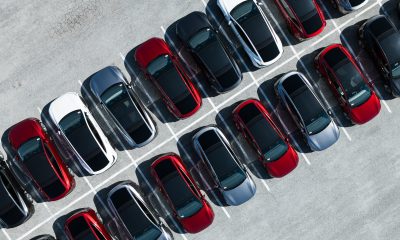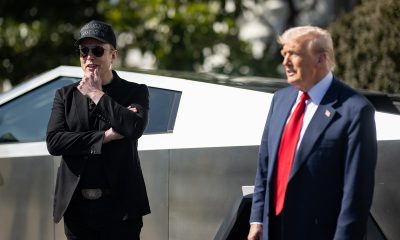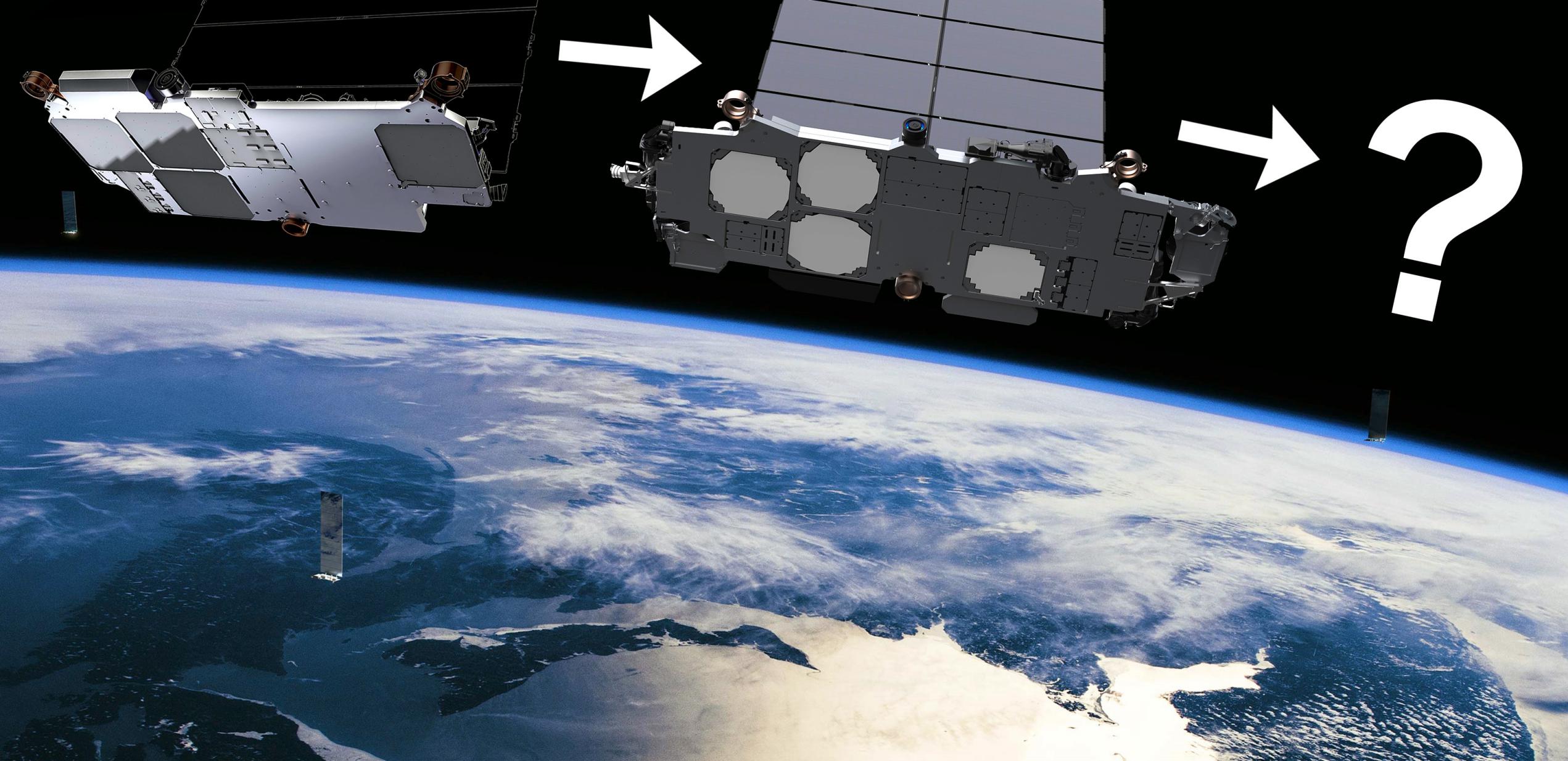

News
SpaceX CEO Elon Musk reveals next-generation Starlink satellite details
SpaceX CEO Elon Musk has revealed the first technical details about the company’s next-generation Starlink ‘Gen2’ satellite design, confirming that it will far outmatch the current generation of satellites by almost every measure.
Speaking in an onsite interview and Starbase tour with YouTuber Tim Dodd (The Everyday Astronaut), Musk – largely unprovoked – revealed that SpaceX has already built at least one functional Starlink Gen2/V2.0 satellite prototype and shipped it to the South Texas Starship factory, where it is currently being stored. More importantly, Musk also provided the first direct specifications for the next-generation spacecraft, stating that each Starlink V2.0 satellite will weigh about 1.25 tons (~2750 lb), measure about seven meters (~23 ft) long, and be almost an order of magnitude more capable than the “Starlink 1” satellites they’ll ultimately supersede.
Almost ten months after SpaceX first revealed its updated plans for a next-generation, 30,000-satellite constellation, those details have confirmed a few key points of speculation about the future of Starlink.
The 1st #SpaceX #Starlink Gen 2 #satellite has been produced. It’s 7 meters long & 1.2 tons, @elonmusk says. Note: that’s 4-5X more massive than Gen 1!
Musk adds, the new version will be almost an order of magnitude more capable than Starlink 1 in terms of useful data throughput.— Stan Shull (@stanshull) May 26, 2022
Back in August 2021, I surmised that just like it has with Falcon 9, SpaceX would again try to optimize its new Starlink V2.0 satellite design to take maximum advantage of Starship’s launch performance. In an updated Starlink Gen2 filing, the company conveniently revealed that a version of the constellation optimized for Starship would be structured such that the rocket could launch an entire orbital plane (one ring of satellites spaced evenly around the Earth) in one go. In that constellation variant, all but ~500 (1.5%) of almost 30,000 spacecraft would be stationed in planes of 110 or 120 satellites, meaning that it was safe to assume that SpaceX meant that every Starship would nominally carry 110-120 satellites. Using Musk’s latest optimistic Starship performance estimate of 150 tons to low Earth orbit (LEO), that all but guaranteed that a Starship-optimized Starlink V2.0 satellite would weigh up to 1250 kilograms.
Musk has now explicitly confirmed that each Starlink V2.0 satellite will weigh… “about one and a quarter tons” or 1250 kilograms. Starlink V1.0 and V1.5 satellites weigh around 260 and 310 kilograms, respectively, meaning that Starlink V2.0 satellites will be about a bit more than four times heavier than V1.5 and a bit less than five times heavier than V1.0.
Musk also revealed that V2.0 satellites will be “almost an order of magnitude more capable than Starlink 1.” He refused to call that capability bandwidth or throughput, the traditional method of describing a communication satellite’s total performance, but Starlink V1.0 satellites are believed to have a total bandwidth of 18 gigabits per second (18 Gbps). As of today, it’s unknown if Starlink V1.5 – a significant upgrade – also added more bandwidth, nor if Musk was referring to that latest Starlink V1.x iteration. But even if he was comparing V2.0 with the earliest V1.0 satellites, it’s possible that each Starlink V2.0 satellite could add around 140-160 Gbps to the 30,000-satellite constellation.
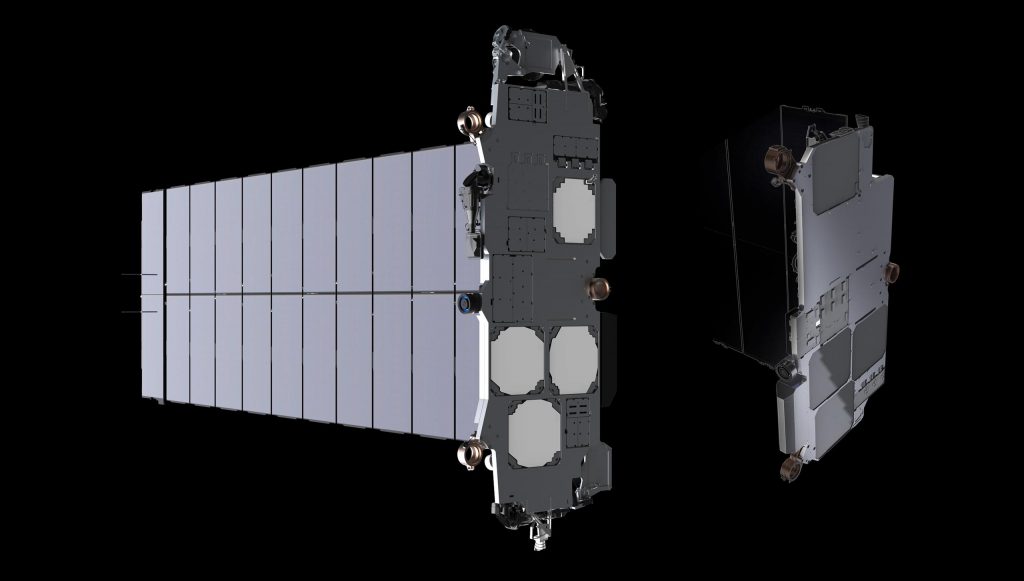
Ultimately, specific numbers aren’t needed to emphasize the importance of the details Musk provided. If true, they mean that Starlink V2.0 will pack roughly twice as much usable bandwidth into a given unit of satellite mass compared to V1.x. Combined with the fact that Starship could offer ~10 times as much performance to LEO as Falcon 9, a single Starship launch could theoretically expand total network capacity roughly twenty times more than one Falcon 9 launch. For example, each Falcon 9 launch of 60 260-kilogram Starlink V1.0 satellites added about 1080 Gbps of instantaneous bandwidth to the constellation. A Starship launch of 120 1250-kilogram Starlink V2.0 satellites could add around 19,000 Gbps (19 terabits per second).
Even despite those massive advantages, SpaceX’s Starlink Gen2 ambitions still leave it no slack whatsoever. If the FCC approves its license request, SpaceX would need to launch half of the constellation within six years – equivalent to around 130 Starship launches or 22 Starship launches per year. In comparison, Falcon 9 – a rocket that’s ten times smaller, less reusable, and has been flying since 2010 – did not achieve 22 launches in one year until 2020. For Starship to have any hope of achieving the cadence Starlink Gen2 requires, SpaceX would have to ramp up launches of the largest rocket ever built at a truly miraculous pace and suffer very few failures or setbacks along the way.
As immense as the challenge may be, the potential rewards are just as high. A constellation of 30,000 Starlink V2.0 satellites – if spaced evenly around the Earth – could have a total bandwidth of ~1250 terabits per second (Tbps) available over land (excluding Antarctica) at any given second. Even if half of that bandwidth is needed for backhaul and routing, the total installed bandwidth of global internet infrastructure was estimated to be 600 Tbps in 2020. Starlink will always be bottlenecked by the number of satellites that can be simultaneously available over any single point on Earth, so the constellation will never be able to match a ground network 1:1 with the same installed capacity, but it’s safe to assume that Starlink Gen2 could serve tens or even hundreds of millions of users located anywhere on Earth if SpaceX is able to build it.
News
Tesla UK sales see 14% year-over-year rebound in June: SMMT data
The SMMT stated that Tesla sales grew 14% year-over-year to 7,719 units in June 2025.
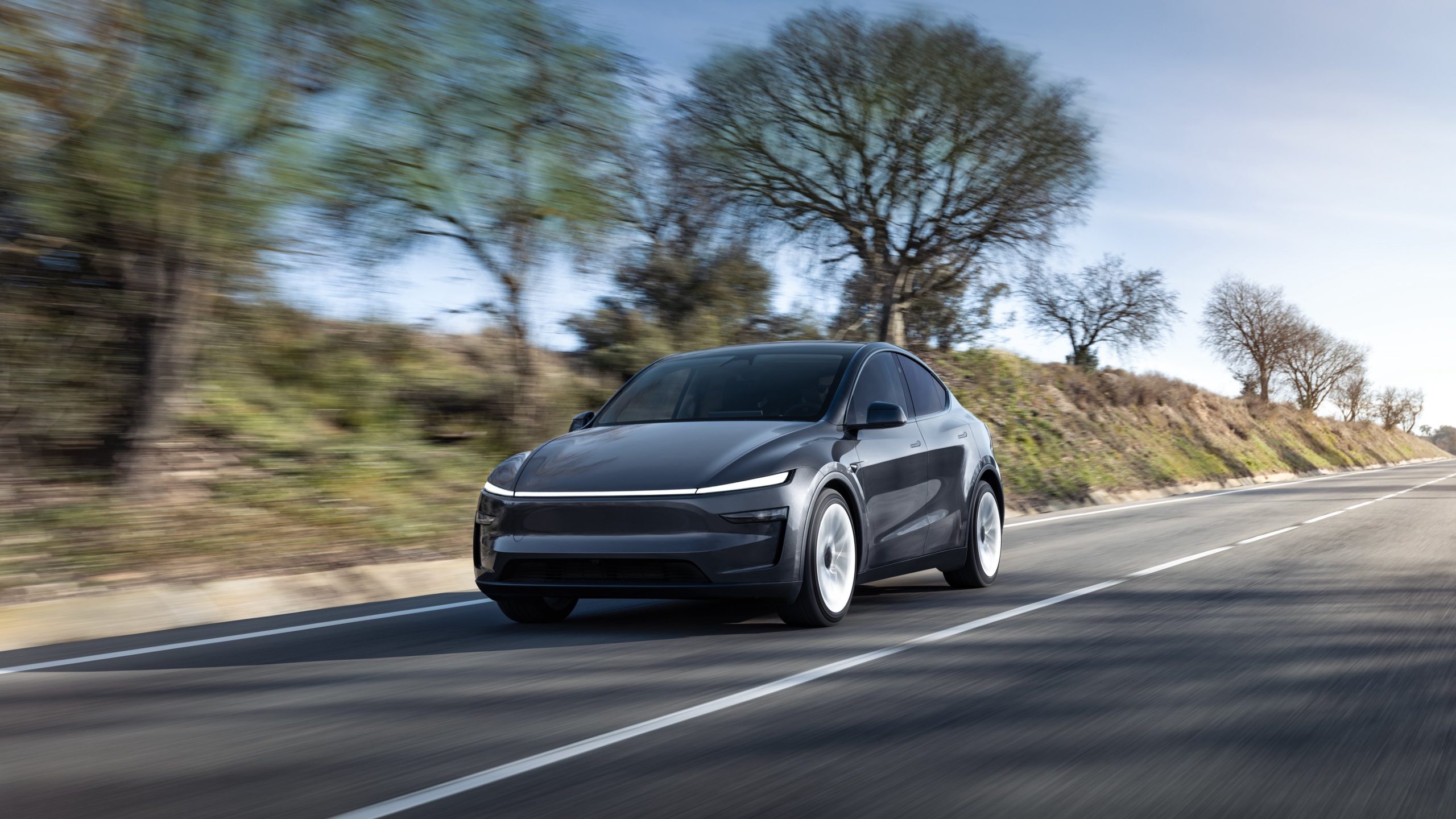
Tesla’s sales in the United Kingdom rose in June, climbing 14% year-over-year to 7,719 units, as per data from the Society of Motor Manufacturers and Traders (SMMT). The spike in the company’s sales coincided with the first deliveries of the updated Model Y last month.
Model Y deliveries support Tesla’s UK recovery
Tesla’s June performance marked one of its strongest months in the UK so far this year, with new Model Y deliveries contributing significantly to the company’s momentum.
While the SMMT listed Tesla with 7,719 deliveries in June, independent data from New AutoMotive suggested that the electric vehicle maker registered 7,891 units during the month instead. However, year-to-date figures for Tesla remain 2% down compared to 2024, as per a report from Reuters.
While Tesla made a strong showing in June, rivals are also growing. Chinese automaker BYD saw UK sales rise nearly fourfold to 2,498 units, while Ford posted the highest EV growth among major automakers, with a more than fourfold increase in the first half of 2025.
Overall, the UK’s battery electric vehicle (BEV) demand surged 39% to to 47,354 units last month, helping push total new car sales in the UK to 191,316 units, up 6.7% from the same period in 2024.
EV adoption accelerates, but concerns linger
June marked the best month for UK car sales since 2019, though the SMMT cautioned that growth in the electric vehicle sector remains heavily dependent on discounting and support programs. Still, one in four new vehicle buyers in June chose a battery electric vehicle.
SMMT Chief Executive Mike Hawes noted that despite strong BEV demand, sales levels are still below regulatory targets. “Further growth in sales, and the sector will rely on increased and improved charging facilities to boost mainstream electric vehicle adoption,” Hawes stated.
Also taking effect this week was a new US-UK trade deal, which lowers tariffs on UK car exports to the United States from 27.5% to 10%. The agreement could benefit UK-based EV producers aiming to expand across the country.
News
Tesla Model 3 ranks as the safest new car in Europe for 2025, per Euro NCAP tests
Despite being on the market longer than many of its rivals, the Tesla Model 3 continues to set the bar for vehicle safety.

The Tesla Model 3 has been named the safest new car on sale in 2025, according to the latest results from the Euro NCAP. Among 20 newly tested vehicles, the Model 3 emerged at the top of the list, scoring an impressive 359 out of 400 possible points across all major safety categories.
Tesla Model 3’s safety systems
Despite being on the market longer than many of its rivals, the Tesla Model 3 continues to set the bar for vehicle safety. Under Euro NCAP’s stricter 2025 testing protocols, the electric sedan earned 90% for adult occupant protection, 93% for child occupant protection, 89% for pedestrian protection, and 87% for its Safety Assist systems.
The updated Model 3 received particular praise for its advanced driver assistance features, including Tesla’s autonomous emergency braking (AEB) system, which performed well across various test scenarios. Its Intelligent Speed Assistance and child presence detection system were cited as noteworthy features as well, as per a WhatCar report.
Other notable safety features include the Model 3’s pedestrian-friendly pop-up hood and robust crash protection for both front and side collisions. Euro NCAP also highlighted the Model 3’s ability to detect vulnerable road users during complex maneuvers, such as turning across oncoming traffic.
Euro NCAP’s Autopilot caution
While the Model 3’s safety scores were impressive across the board, Euro NCAP did raise concerns about driver expectations of Tesla’s Autopilot system. The organization warned that some owners may overestimate the system’s capabilities, potentially leading to misuse or inattention behind the wheel. Even so, the Model 3 remained the highest-scoring vehicle tested under Euro NCAP’s updated criteria this year.
The Euro NCAP’s concerns are also quite interesting because Tesla’s Full Self-Driving (FSD) Supervised, which is arguably the company’s most robust safety suite, is not allowed for public rollout in Europe yet. FSD Supervised would allow the Model 3 to navigate inner city streets with only minimal human supervision.
Other top scorers included the Volkswagen ID.7, Polestar 3, and Geely EX5, but none matched the Model 3’s total score or consistency across categories. A total of 14 out of 20 newly tested cars earned five stars, while several models, including the Kia EV3, MG ZS, and Renault 5, fell short of the top rating.
Elon Musk
Why Tesla’s Q3 could be one of its biggest quarters in history
Tesla could stand to benefit from the removal of the $7,500 EV tax credit at the end of Q3.

Tesla has gotten off to a slow start in 2025, as the first half of the year has not been one to remember from a delivery perspective.
However, Q3 could end up being one of the best the company has had in history, with the United States potentially being a major contributor to what might reverse a slow start to the year.
Earlier today, the United States’ House of Representatives officially passed President Trump’s “Big Beautiful Bill,” after it made its way through the Senate earlier this week. The bill will head to President Trump, as he looks to sign it before his July 4 deadline.
The Bill will effectively bring closure to the $7,500 EV tax credit, which will end on September 30, 2025. This means, over the next three months in the United States, those who are looking to buy an EV will have their last chance to take advantage of the credit. EVs will then be, for most people, $7,500 more expensive, in essence.
The tax credit is available to any single filer who makes under $150,000 per year, $225,000 a year to a head of household, and $300,000 to couples filing jointly.
Ending the tax credit was expected with the Trump administration, as his policies have leaned significantly toward reliance on fossil fuels, ending what he calls an “EV mandate.” He has used this phrase several times in disagreements with Tesla CEO Elon Musk.
Nevertheless, those who have been on the fence about buying a Tesla, or any EV, for that matter, will have some decisions to make in the next three months. While all companies will stand to benefit from this time crunch, Tesla could be the true winner because of its sheer volume.
If things are done correctly, meaning if Tesla can also offer incentives like 0% APR, special pricing on leasing or financing, or other advantages (like free Red, White, and Blue for a short period of time in celebration of Independence Day), it could see some real volume in sales this quarter.
You can now buy a Tesla in Red, White, and Blue for free until July 14 https://t.co/iAwhaRFOH0
— TESLARATI (@Teslarati) July 3, 2025
Tesla is just a shade under 721,000 deliveries for the year, so it’s on pace for roughly 1.4 million for 2025. This would be a decrease from the 1.8 million cars it delivered in each of the last two years. Traditionally, the second half of the year has produced Tesla’s strongest quarters. Its top three quarters in terms of deliveries are Q4 2024 with 495,570 vehicles, Q4 2023 with 484,507 vehicles, and Q3 2024 with 462,890 vehicles.
-

 Elon Musk4 days ago
Elon Musk4 days agoTesla investors will be shocked by Jim Cramer’s latest assessment
-

 News1 week ago
News1 week agoTesla Robotaxi’s biggest challenge seems to be this one thing
-

 Elon Musk2 weeks ago
Elon Musk2 weeks agoFirst Look at Tesla’s Robotaxi App: features, design, and more
-

 News2 weeks ago
News2 weeks agoSpaceX and Elon Musk share insights on Starship Ship 36’s RUD
-

 News2 weeks ago
News2 weeks agoWatch Tesla’s first driverless public Robotaxi rides in Texas
-

 News1 week ago
News1 week agoWatch the first true Tesla Robotaxi intervention by safety monitor
-

 News2 weeks ago
News2 weeks agoTesla has started rolling out initial round of Robotaxi invites
-
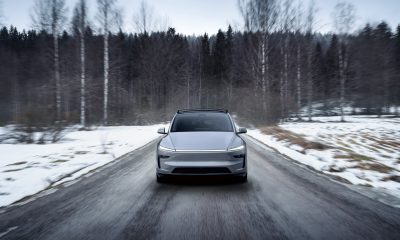
 Elon Musk2 weeks ago
Elon Musk2 weeks agoTesla to launch in India in July with vehicles already arriving: report






